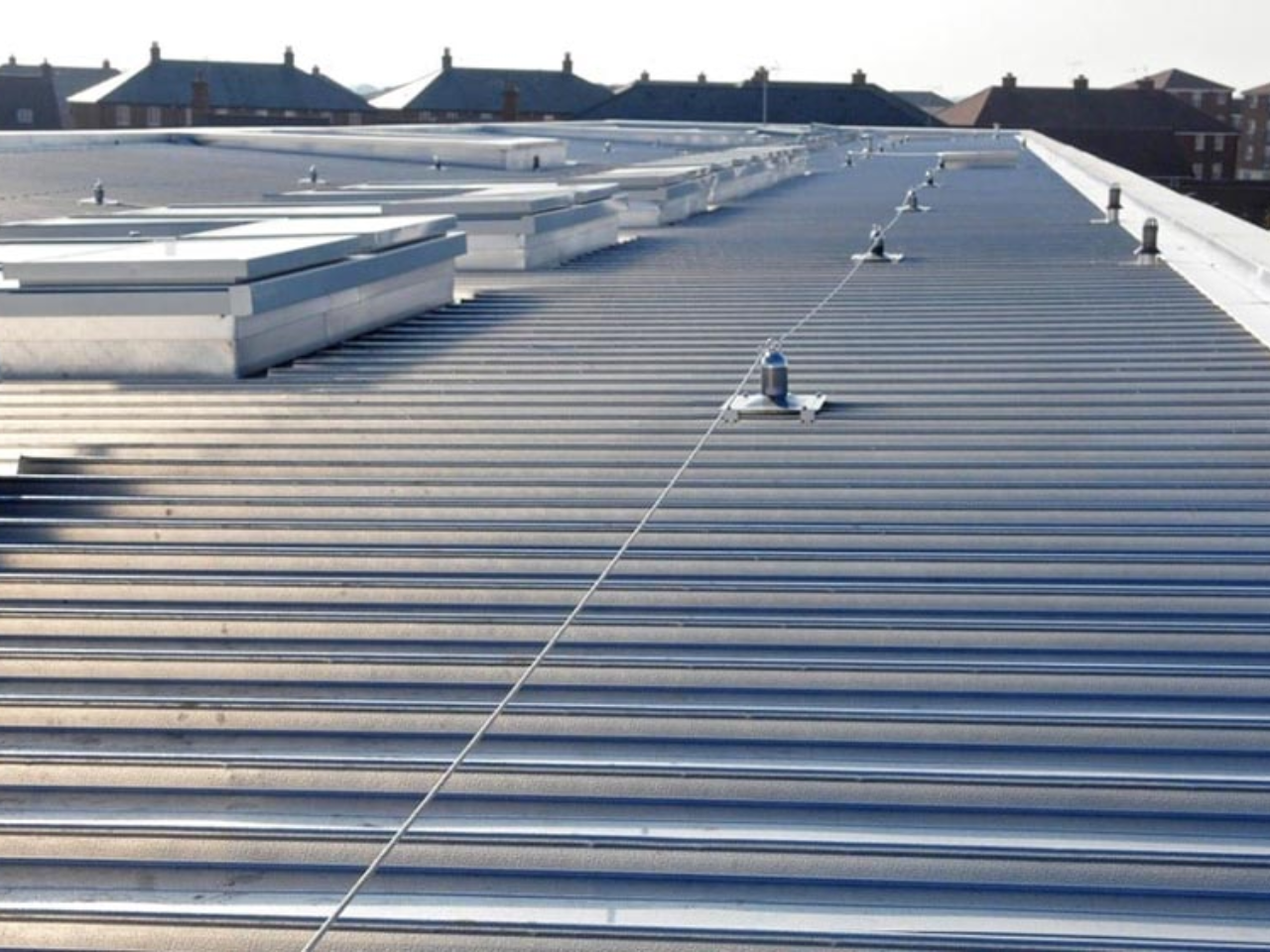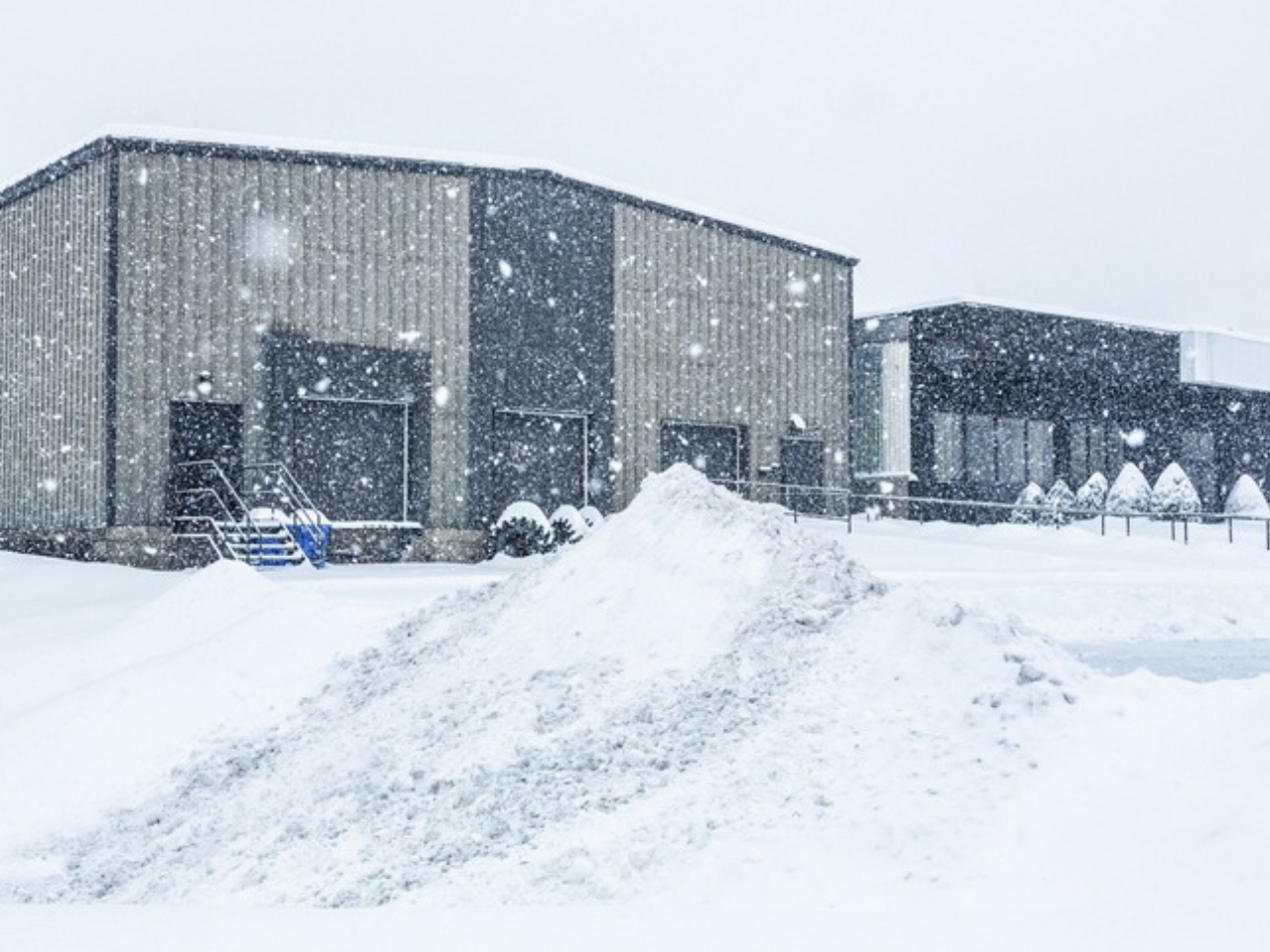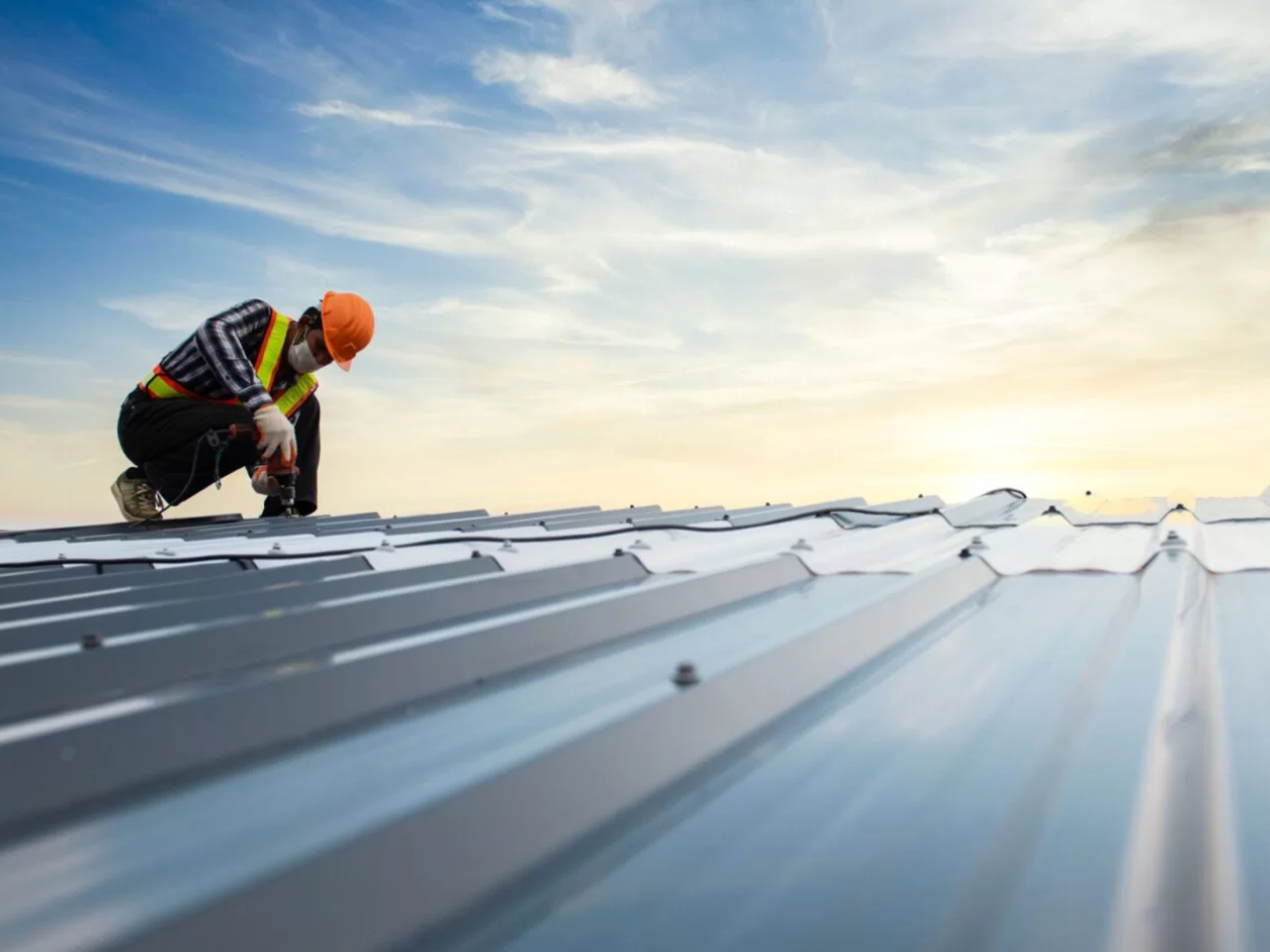Why Metal Roof Retrofits Work for Southern Indiana Buildings
If you own or manage a commercial building in Southern Indiana, your roof is one of the most important investments you’ll make. Between wild weather swings, aging buildings, and rising construction costs, many property owners are looking for better ways to extend the life of their roof — without tearing everything off or shutting down operations.
One roofing method is gaining popularity across the region: metal-over-metal reroofing (also known as a metal roof retrofit). This system involves placing a new metal roof over the existing one — and it’s proving to be a smart choice for many buildings in this part of the state.
What Is Metal-Over-Metal Reroofing (And How Does It Work)?

Metal-over-metal reroofing is a roofing overlay system where new metal panels are installed on top of your current metal roof. Instead of tearing off the old roof, contractors build a spacer system (often using sub-purlins) to hold the new roof above the old one. This allows for better drainage, airflow, and room for insulation upgrades.
It’s commonly used on:
Warehouses
Factories and plants
Metal barns and agricultural buildings
Schools and government buildings
This retrofit approach saves time, reduces costs, and adds decades of life — all without exposing the inside of your building to the elements.
Why This Roofing Method Works Well in Southern Indiana

Southern Indiana has specific weather and building conditions that make this roofing method especially useful. Here’s why:
1. Harsh Weather and Freeze-Thaw Cycles
This region sees freezing winters, humid summers, and lots of temperature swings in spring and fall. These conditions cause metal panels and fasteners to shift, which can lead to leaks and damage over time. A new retrofit roof provides a tighter, more weather-resistant seal.
2. Heavy Rain and High Winds
Southern Indiana sees frequent storms, especially in spring and summer. A properly installed standing seam metal roof handles wind uplift and water runoff better than older roofing systems.
3. Aging Buildings from the 1970s–2000s
Many metal buildings in the area were built decades ago and now have roofs nearing the end of their lifespan. But in many cases, the structure underneath is still strong. A metal-over-metal retrofit lets you take advantage of that — without rebuilding from scratch.
4. Tight Budgets and Tax Benefits
This region includes many cost-conscious building owners: school districts, manufacturers, co-ops, and municipalities. MOM reroofing is often 20–40% less expensive than a full replacement and may qualify for accelerated depreciation or energy-related tax credits.
5. Buildings That Need to Stay Operational
Factories, storage centers, and food plants often can’t afford a shutdown. Since the original roof stays in place, reroofing can happen while the business stays open — with little risk of weather-related damage during construction.
Top Benefits of a Metal Roof Retrofit in This Region
If you’re based in Southern Indiana, here’s what a metal-over-metal reroof can offer:
No Tear-Off Required
Avoid demolition, mess, and disposal costs — especially during rainy seasons.
Adds 20–30+ Years of Life
Modern metal systems are built to last for decades, with better durability and fewer leaks.
Better Energy Efficiency
This is the perfect time to add insulation or thermal spacers — improving comfort and lowering energy bills in both hot and cold months.
Tax and Depreciation Advantages
Depending on how your project is structured, some roofing upgrades qualify for tax savings or quicker depreciation schedules.
Works With Common Local Building Types
Southern Indiana has many large metal structures and Butler-style buildings — all great candidates for this type of system.
Is Metal-Over-Metal Reroofing Right for Your Building?

This method isn’t ideal for every building, but it’s especially useful for:
Metal roofs with through-fastened or standing seam panels
Facilities with leak problems but no major structural damage
Operational buildings that can’t pause for long construction projects
Older industrial or agricultural buildings
Property owners focused on long-term performance at a lower cost
What to Know Before Starting a Metal Roof Retrofit Project
If you’re considering this method, here are a few things to check first:
Structural Review
Make sure the existing framing and roof can support the added weight of a second roof layer.Drainage Planning
The new system should fix any water ponding or flow issues from the old roof.Right Panel System
Choose a modern system like a mechanically seamed standing seam that’s built to handle Indiana’s wind and storm activity.Add Insulation
Use the gap between roof layers to improve your building’s thermal performance.Permits
Most counties in Indiana require a building permit for reroofing — even overlays. Check with your local office before starting.
Quick Checklist: Is This Roofing Method a Fit for You?
You might be a good candidate for a metal-over-metal reroof if:
Your roof is over 20 years old
You’re seeing recurring leaks or rust
Your building has a metal roof with no structural issues
You need to avoid business disruptions
You’re looking for a long-term roofing fix on a fixed budget
Final Thoughts: Why It’s a Smart Investment in Southern Indiana
Metal-over-metal reroofing isn’t just a shortcut — it’s a strategic solution for commercial building owners across Southern Indiana. With harsh weather, aging infrastructure, and the need to keep costs down, it provides a practical way to upgrade your roof without tearing your building apart.
If your roof is leaking, aging, or costing you money in energy bills, but the frame underneath is still sound, this might be the best next step for your property.